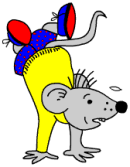 Two free revision worksheets, similar to the year 4 work on relating addition and subtraction, but with larger numbers. If children have not come across this type of exercise before then it is very valuable practice.
Two free revision worksheets, similar to the year 4 work on relating addition and subtraction, but with larger numbers. If children have not come across this type of exercise before then it is very valuable practice.
It is a concept which the Primary Framework for Mathematics emphasises and is important for maths later during secondary school and GCSEs.
Given one piece of information children should be able to deduce three more. For example: If 187 – 39 = 148
then
187 – 148 = 39
and 148 + 39 = 187
Free Y5 maths worksheet: Revise relationship between addition and subtraction (pg 1)
Free Y5 maths worksheet: Revise relationship between addition and subtraction (pg 2)
 Now we are getting really tricky. This is like a maze: start at the arrow, in this case pointing at the letter c and move across or down (but not diagonally) like a snake, to make a word. The first word has been done for you: clear. The next word follows on immediately from the first, the third from the second and so on. Every letter is used once, with the final word ending where the arrow exits (in this case the letter s).
Now we are getting really tricky. This is like a maze: start at the arrow, in this case pointing at the letter c and move across or down (but not diagonally) like a snake, to make a word. The first word has been done for you: clear. The next word follows on immediately from the first, the third from the second and so on. Every letter is used once, with the final word ending where the arrow exits (in this case the letter s).